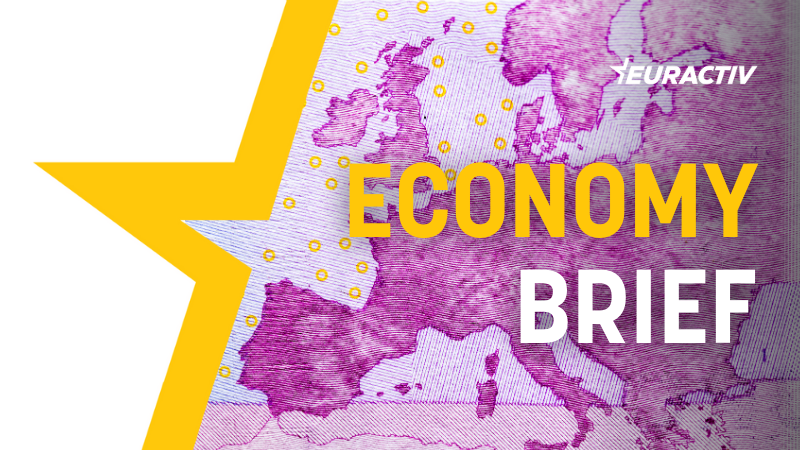
As EU finance ministers prepare to discuss once again the reform of the EU’s rules for national debts and deficits, the positions of hawkish countries and those calling for more flexibility remain wide apart, with little sign that a compromise is within reach.
On Thursday (9 November), finance ministers will discuss the Commission’s reform proposal for the EU rules for national budgets, also known as the Stability and Growth Pact.
Spain, which holds the rotating EU Council Presidency until year-end, “has been active in the hope of reaching an agreement [in time],” a source at the French Economy Ministry told journalists.
Another national diplomat said the Spanish presidency had sped up its work in the last couple of weeks to get to a more closely defined “landing zone” where consensus might be found.
Yet behind a veneer of consensus, there are still deep divergences, especially as France looks to tame some of Germany’s more drastic “safeguard” measures, fearing that the reform, which intends to avoid the past mistakes of setting rigid fiscal rules, might end up encouraging austerity measures once again.
Question marks also remain over the actual leeway member states would have in securing flexibility over their debt reduction plans when investing in digital, climate, defence projects, among others.
Country-specific pathways
The reform debate does not put into question the EU’s targets of a maximum public debt of 60% of GDP and a maximum annual deficit of 3% of GDP, but how quickly countries have to reach those.
At the heart of the proposal is the idea of country-specific pathways to reduce debt levels towards the 60% level, as opposed to the existing rules which oblige highly-indebted countries to slash 1/20 of their excessive debt per year.
The new country-specific pathways would focus on the country’s “net expenditure”, limiting spending in such a way that debt levels would start decreasing at the latest after a so-called “adjustment period” of four to seven years.
“Net expenditure” includes all public spending without interest payments or cyclical unemployment benefits, while also leaving the option to finance additional expenditures through tax increases.
‘Hawkish’ Germany
However, a group of ‘hawkish’ member states led by Germany considers country-specific pathways as too weak, and insists on numerical targets that would apply for all countries.
In a compromise proposal put forward by Spain and seen by Euractiv, countries with an annual deficit above 3% would have to reduce their spending by at least 0.5% of GDP per year, until the 3% threshold is reached.
This target would apply “ex ante”, meaning it would not be sharpened in case of an unexpected drop of GDP, such as in an economic crisis.
Furthermore, the new rules should include a minimum annual debt reduction applying to all countries with debt levels above 60%, the proposal suggests, but without yet specifying a number.
Also, Germany wants to see a certain security margin for the 3% deficit threshold so that member states’ deficits stay well below the threshold.
While Spain hopes to find common ground, a spokesperson of German Finance Minister Christian Lindner said on Monday that “a landing zone has yet to emerge between the proposals currently circulating from different directions”.
Don’t repeat austerity mistakes
This is not to many countries’ taste, however, amid concerns that the move may just bring back austerity measures in countries deemed to have excessive public debt levels.
Back in June, French Economy Minister Bruno Le Maire rejected Germany’s ‘common benchmarks’ idea, arguing it had been “tested” in the past. “It led to recession, it led to economic difficulties, it led to a loss of production and growth in Europe, it’s the opposite of what we want,” he said at the time.
Renew MPs, affiliated with President Emmanuel Macron, also warned against the economic dangers associated with such benchmarks, one claiming in confidence to Euractiv that “Christian Lindner had gone mad”.
A day before the ECOFIN meeting however, the French seem to have softened their stance somewhat. On Germany’s demand for a minimum annual debt reduction, France could agree to make that an average reduction over the course of the entire period of the plan, rather than an inflexible yearly requirement.
On the other common benchmarks, France agreed that “safety nets” are necessary, though “they should not run against the spirit of the reform,” which encourages country-specific plans and leaves room for large-scale investments, a ministerial adviser said.
He denied, however, that France had ever “given in” to Germany’s proposal.
Meanwhile, some countries still need more assurances that the fiscal rules will be properly enforced by means of the excessive deficit procedure (EDP).
“When we have the discussion of opening an EDP, we really think it’s good that debt is a key relevant factor,” an EU member state diplomat said.
According to the Spanish draft compromise text, the launch of an EDP would also take into account a member state’s commitment to common priorities, especially defence.
No carve-out for climate investments
Concerns have also been voiced that too tight rules could limit the capacities of member states to spend money on common priorities, such as climate protection or military spending.
But while military spending seems to get a slightly privileged status when an EDP is triggered, other priorities like climate action do not. This is considered insufficient by many environmental organisations.
“We would wish to see our finance ministers take into account the planetary physical boundaries, which are based on science, rather than arbitrary debt limits decided 30 years ago by people who had no idea about today’s existential threats, which is climate change,” Isabelle Brachet of Climate Action Network Europe told a press briefing on Tuesday.
To conclude the reform before the end of the legislative term, an agreement would need to be found between member states and in the Parliament by the end of the year.
“It’s quite a tight schedule,” an EU diplomat said, pointing to the fact that the member states have not started working on the legal texts yet but are still trying to find an agreement on the principles.
If both the Parliament and the Council can finalise their respective positions in December, this would then give the institutions two to three months to negotiate the final agreement that would have to get the final, formal go-ahead in March at the latest.
[Edited by Zoran Radosavljevic]










